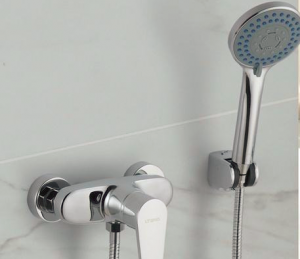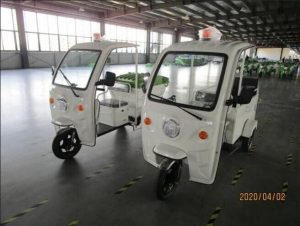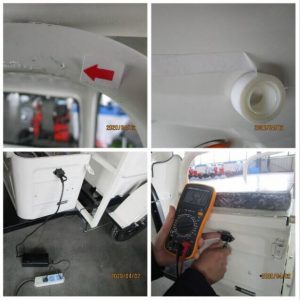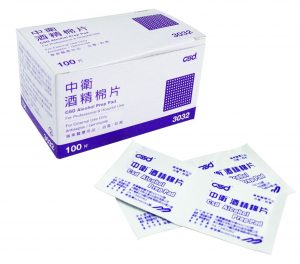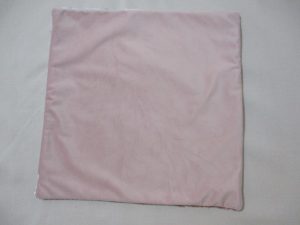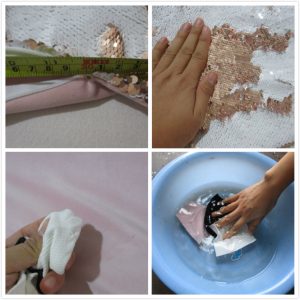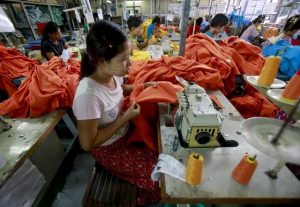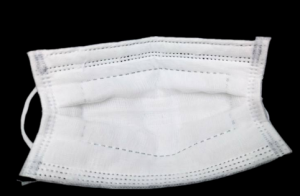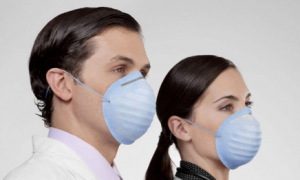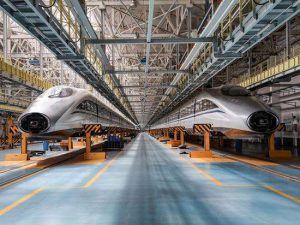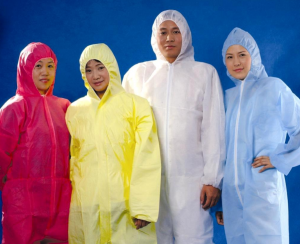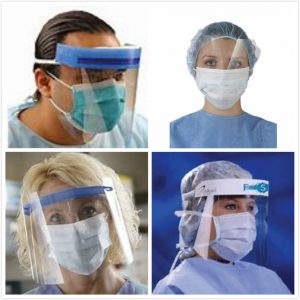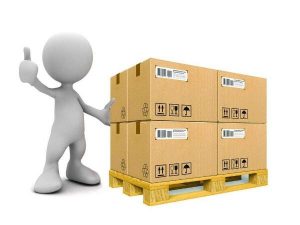
Product quality inspection report shows different characteristics, and the evaluation of these characteristics will be different due to different standards of people’s grasp. In order to avoid the influence of subjective factors, in the production, inspection and evaluation of product quality, there needs to be a basic basis and a unified standard, which is the product quality standard.
Firstly, according to the order of the production process
1. Incoming inspection
Incoming inspection is the inspection of raw materials, outsourced parts, outsourced parts, supporting parts, auxiliary materials, supporting products and semi-finished products purchased by the enterprise before entering the warehouse.
The purpose of purchase inspection is to prevent non-conforming products from entering the warehouse, prevent the use of non-conforming products, affect the product quality, affect the reputation of the enterprise or disrupt the normal production order. This is crucial to keeping the quality high and reducing unnecessary economic losses for the company.
Income inspection shall be conducted by a full-time inspector of the enterprise in strict accordance with technical documents.
Incoming inspection includes two kinds of sample inspection and batch inspection.
2. Process inspection
Process inspection, also known as process inspection, is an inspection performed between various processing steps in the product formation process.
The purpose is to ensure that the unqualified semi-finished products in each process cannot flow into the next process, to prevent the continued processing of unqualified semi-finished products and the batch of semi-finished products to be unqualified, and to ensure the normal production order. Because the process inspection is carried out according to the production process and operating procedures, it plays a role in verifying the process and ensuring that the process procedures are carried out.
Process inspection usually has three main forms: first article inspection; roving inspection; completion inspection.
3. Final inspection
Final inspection is also called finished product inspection, the purpose is to ensure that non-conforming products are not delivered.
Finished product inspection is a comprehensive inspection of the product after production and before it is put into storage.
The inspection of finished products is the responsibility of the enterprise quality inspection agency. Inspection should be carried out in accordance with the instructions of the inspection guide for finished products. Inspection of large quantities of finished products is generally carried out by statistical sampling inspection.
For products that pass the inspection of finished products, the shop should not go through the warehouse formalities until the inspector has issued a certificate of compliance. All the unqualified finished products should be returned to the workshop for rework, repair, downgrade or scrap treatment. The reworked and reworked products must be inspected again for the entire project. The inspector must make a record of the reworked and reworked products to ensure that the product quality is traceable.
Secondly, classification by inspection location
1. Centralized inspection
Centralize the products to be inspected in a fixed place, such as an inspection station. Generally, the final inspection adopts the method of centralized inspection.
2. On-site inspection
On-site inspection is also called on-site inspection, which refers to inspection at the production site or product storage place. General process inspection or final inspection of large products uses on-site inspection.
3. Flow inspection (roving inspection)
Inspectors shall conduct roving quality inspections of manufacturing processes at the production site. The inspectors shall conduct inspections in accordance with the inspection frequency and quantity specified in the inspection instructions and make a record.
The process quality control point should be the focus of the roving inspection. The inspector shall mark the inspection results on the process control chart.
When the inspection process finds that there is a problem in the quality of the process, on the one hand, it is necessary to work with the operator to find out the cause of the abnormal process, take effective corrective measures, and restore the process control state; All processed workpieces before inspection are re-inspected or screened to prevent substandard products from flowing into the next process or the user.
Thirdly, classification by inspection method
1. Physical and Chemical Inspection
Physical and chemical inspection refers to the method that mainly relies on measuring instruments, instruments, meters, measuring devices or chemical methods to inspect products and obtain inspection results. Where possible, use physical and chemical tests.
2. Sensory test
Sensory test is also called sensory test, which is based on human sensory organs to evaluate or judge the quality of the product. For example, the shape, color, odor, scars, and aging of products are usually tested by human visual, auditory, tactile, or olfactory sensory organs, and the quality of the product is judged as good or bad.
Sensory tests can be divided into:
Hobby sensory tests, such as wine tasting, tea tasting, and product appearance and style identification. Only by the rich practical experience of inspectors can correct and effective judgments be made.
Analytical sensory inspections, such as train inspections and equipment inspections, rely on the feelings of hands, eyes, and ears to judge temperature, speed, and noise.
3. Experimental use identification
Experimental use identification refers to the inspection of the actual use effect of the product. Through the actual use or trial of the product, observe the applicability of the product’s use characteristics.
Fourthly, according to the number of products tested
1. Full inspection
Full inspection is also called 100% inspection, which is to inspect all the submitted products one by one according to the prescribed standards.
It should be noted that even the full test cannot guarantee 100% of the grid due to wrong and missed tests. If the desired product is 100% qualified, you must repeat the full inspection several times to get close to the 100% Lily.
2. Sampling inspection
Sampling inspection is based on a predetermined sampling plan, and a specified number of samples are taken from the inspection batch to form a sample. The inspection of the sample can be used to infer that the batch is qualified or unqualified.
3. Exempt
Exemption from inspection is also called no-test inspection, which is mainly the non-test inspection performed on products purchased by the national authority’s product quality certification or trustworthy products at the time of purchase. The acceptance or failure can be based on the supplier’s certificate or inspection data.
When implementing inspection exemption, customers often have to supervise the production process of the supplier. Supervision can be carried out by sending personnel to station or requesting control charts of the production process.
Fifthly, classification by the nature of the data of the quality characteristics
1. Inspection of measurement value
Measurement value inspection needs to measure and record the specific values of the quality characteristics, obtain the measurement value data, and compare the data value with the standard to determine whether the product is qualified.
The quality data obtained from the measurement value inspection can be analyzed by statistical methods such as histograms and control charts, and more quality information can be obtained.
2. Count value test
In order to improve production efficiency in industrial production, limit gauges (such as plug gauges, card gauges, etc.) are often used for inspection. The obtained quality data is count value data such as the number of qualified products and the number of unqualified products, but cannot obtain specific values of quality characteristics.
Sixthly, classification according to the condition of the samples after inspection
1. Destructive inspection
Destructive inspection means that the inspection results (such as the blasting ability of the shell, the strength of the metal material, etc.) can only be obtained after the sample being inspected is destroyed. After the destructive test, the tested sample has completely lost its original use value, so the sample size is small, and the risk of testing is large.
2. Non-destructive inspection
Non-destructive inspection refers to inspection in which the product is not damaged during the inspection process, and the product quality does not change substantially. Most inspections, such as part size measurements, are non-destructive. Due to the development of non-destructive testing technology, the scope of non-destructive testing is gradually expanding.
Seventhly, classification by inspection purpose
1. Production inspection
Production inspection refers to the inspections carried out by production enterprises at various stages in the entire production process of product formation, with the purpose of ensuring the quality of products produced by production enterprises.
Internal control standards for production inspection.
2. Acceptance inspection
Acceptance inspection is the inspection performed by the customer (requirer) on the acceptance of the product provided by the production enterprise (supplier). The purpose of acceptance inspection is to ensure the quality of the accepted product.
Acceptance inspection carries out acceptance criteria.
3. Supervision inspection
Supervision and inspection refers to the market random inspection and supervision conducted by the independent inspection agencies authorized by the competent government departments at all levels in accordance with the plan formulated by the quality supervision and management department to extract commodities from the market or directly extract products from production enterprises. The purpose of supervision and inspection is to carry out macro-control over the quality of products put on the market.
4. Verification inspection
Verification inspection refers to an independent inspection agency authorized by the competent government department at all levels to take samples from the products produced by the enterprise and verify whether the products produced by the enterprise meet the requirements of the implemented quality standards. For example, the type test in product quality certification is a verification inspection.
5. Arbitration inspection
Arbitration inspection means that when the supplier and the buyer have a dispute over product quality, an independent inspection agency authorized by the competent government department at all levels will take samples for inspection and provide the arbitration agency as the technical basis for the award.
Eighthly, classification by supply and demand
1. First-party inspection
The producer (supplier) is called the first party. First-party inspection refers to the inspection of the products produced by the manufacturer itself. The first party inspection is actually the production inspection.
2. Second party inspection
The user (customer, buyer) is called the second party. The purchaser’s inspection of purchased products or raw materials, purchased parts, outsourced parts, and ancillary products is called second-party inspection. The second party inspection is actually the purchase inspection (buy inspection) and acceptance inspection.
3. Third party inspection
The independent inspection agencies authorized by the competent government departments at all levels are called impartial third parties. Third party inspections include supervision inspections, verification inspections, arbitration inspections, etc.
Ninethly, classification by inspection personnel
1. Self-test
Self-inspection refers to the inspection of the products or parts processed by the operator himself. The purpose of the self-inspection is to understand the quality status of the processed product or component through inspection, so as to continuously adjust the production process to produce a product or component that fully meets the quality requirements.
2. Mutual inspection
Mutual inspection is the mutual inspection of the processed products by the operators of the same job or the next process. The purpose of mutual inspection is to find quality problems that do not comply with the technical regulations in time through inspection, so that corrective measures can be taken in time to ensure the quality of processed products.
3. Special Inspection
Special inspection refers to the inspection conducted by personnel directly under the leadership of the quality inspection agency of an enterprise who are engaged in quality inspection.
Tenthly, classification by inspection system components
1. Batch inspection
Batch-by-batch inspection refers to the inspection of each batch of products produced in the production process. The purpose of batch-by-batch inspection is to determine the conformity of the batch of products.
2. Periodic inspection
Period refers to time. Periodic inspection is an inspection performed at a certain interval (quarterly or monthly) from a batch or batches that pass the batch-by-batch inspection. The purpose of cycle inspection is to determine whether the production process is stable during the cycle.
Periodic inspection and batch-by-batch inspection constitute the complete inspection system of the enterprise. Periodic inspection is an inspection to determine the role of system factors in the production process, while batch inspection is an inspection to determine the role of random factors. The two are a complete inspection system for commissioning and maintaining production. Periodic inspection is the premise of batch-by-batch inspection. There is no batch-by-batch inspection for production systems that do not have periodic inspection or fail in periodic inspection. Batch-by-batch inspection is a supplement to periodic inspection. Batch-by-batch inspection is a test that controls the effects of random factors on the basis of eliminating the effects of system factors through periodic inspection.
In general, batch-to-batch inspection only inspects the key quality characteristics of the product. The periodic inspection should check the entire quality characteristics of the product and the impact of the environment (temperature, humidity, time, air pressure, external force, load, radiation, mildew, moth, etc.) on the quality characteristics, including accelerated aging and life testing. Therefore, the equipment required for the periodic inspection is complicated, the cycle is long, and the cost is high, but the periodic inspection must not be performed because of this. When an enterprise does not have the conditions to conduct periodic inspections, it may entrust inspection institutions at all levels to perform periodic inspections on its behalf.
Eleventhly, according to the effect of inspection
1. Critical test
Judgment inspection is based on the quality standards of the product, and the conformity judgment of the product is determined by inspection. The main function of the judgment test is to check, and its prevention function is very weak.
2. Informational Inspection
Informative inspection is a modern inspection method that uses the information obtained by inspection for quality control. Because informative inspection is both inspection and quality control, it has a strong preventive function.
3. Causality test
The cause-finding inspection is to find out the possible causes of non-conformity (cause-seeking) through sufficient prediction during the design stage of the product, and to design and manufacture error-proof devices in a targeted manner for the product manufacturing process to prevent non-conformities The production of goods. Therefore, causal tests have a strong preventive function.
